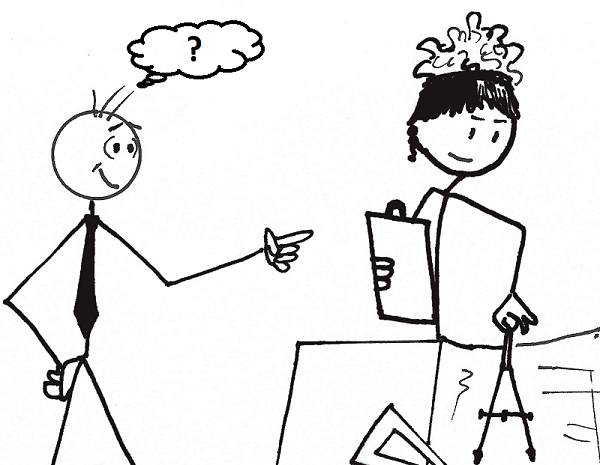Il simple present di “To be”
Il verbo essere (to be) è il verbo più importante in lingua inglese. Difficile da usare quando si inizia a studiare la lingua perchè è un verbo irregolare in quasi tutte le sue forme.
Come si forma:
Nel simple present è coniugato come segue:
Forma affermativa
soggetto + verbo essere + ....
| Pronome soggetto | Forma intera | Forma contratta | Italiano |
| I | am | 'm | io sono |
| you | are | 're | tu sei |
| he/she/it | is | 's | egli è |
| we | are | 're | noi siamo |
| you | are | 're | voi siete |
| they | are | 're | loro sono |
They're funny [tooltip]loro sono divertenti[/tooltip]
You are funny [tooltip]sei divertente[/tooltip]

Forma interrogativa
La forma interrogativa del verbo “to be”, come di altri ausiliari, è caratterizzata dall'inversione tra ausiliare e soggetto.
verbo essere + soggetto + .... ?
| Verbo be | Pronome soggetto | Italiano |
| Am | I? | sono io? |
| Are | you? | sei tu? |
| Is | he/she/it? | é lui/lei/esso? |
| Are | we? | siamo noi? |
| Are | you? | siete voi? |
| Are | they? | sono loro? |
Is Leonardo diCaprio Portuguese? [tooltip]Leonardo diCaprio è portoghese?[/tooltip]
Are you angry? [tooltip]Sei arrabbiato?[/tooltip]
Are you an engineer? [tooltip]Sei un ingeniere?[/tooltip]

Forma negativa
La forma negativa nel verbo essere è si costruice aggiungendo not alla forma affermativa
soggetto + verbo essere + not + ...
| Pronome soggetto | Forma intera | not | Forma contratta | Italiano |
| I | am | not | I'm not | io non sono |
| you | are | not | you aren't | tu non sei |
| he/she/it | is | not | he isn't | egli non è |
| we | are | not | we'aren't | noi non siamo |
| you | are | not | you aren't | voi non siete |
| they | are | not | they aren't | loro non sono |
I'm not afraid [tooltip]non ho paura[/tooltip]
you are not alone [tooltip]non sei solo[/tooltip]
Le forme estese
L'uso delle forme estese si usa, per nelle forme affermative e negative, per:
- l’inglese scritto e formale
- Nell’inglese parlato, ma solo quando si vuole mettere in risalto quello che si sta dicendo. Questo perchè nella forma estesa il tono della voce cade sia sul soggetto ma anche sulla prima vocale del verbo così la frase risulta ben pronunciata.
Le forme contratte
Le forme contratte affermative e negative si usano:
- Nell’inglese scritto ed informale, come una mail ad un amico.
- Nell’inglese parlato corrente.
Riepilogo
I, you, he, she, it, you, they sono pronomi soggetto.
am, are, is sono "forms of the verb to be in the simple present"
'm, 're, 's sono le forme contratte di am, are, is
'm not, aren't, isn't sono le forme contratte di am not, are not, is not
--- PER APPROFONDIRE L’ARGOMENTO ---
The verb "to be" is one of the most common verbs in the English language. It has many different forms. The verb "to be" also has many different meanings. The following are the most important ones: Exists (There is a dog in the car) - Happens (the meeting is today) - Located (she is always at the gym) - Shows identity (He is a football player) - Shows a quality (This is safe)